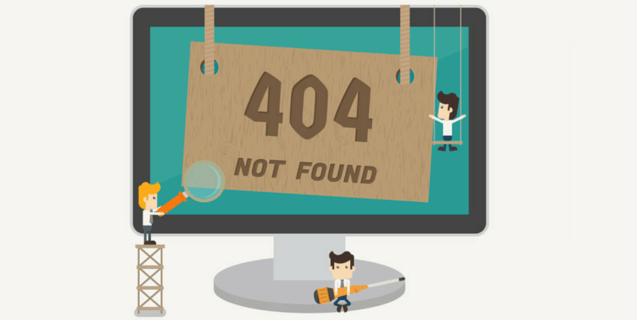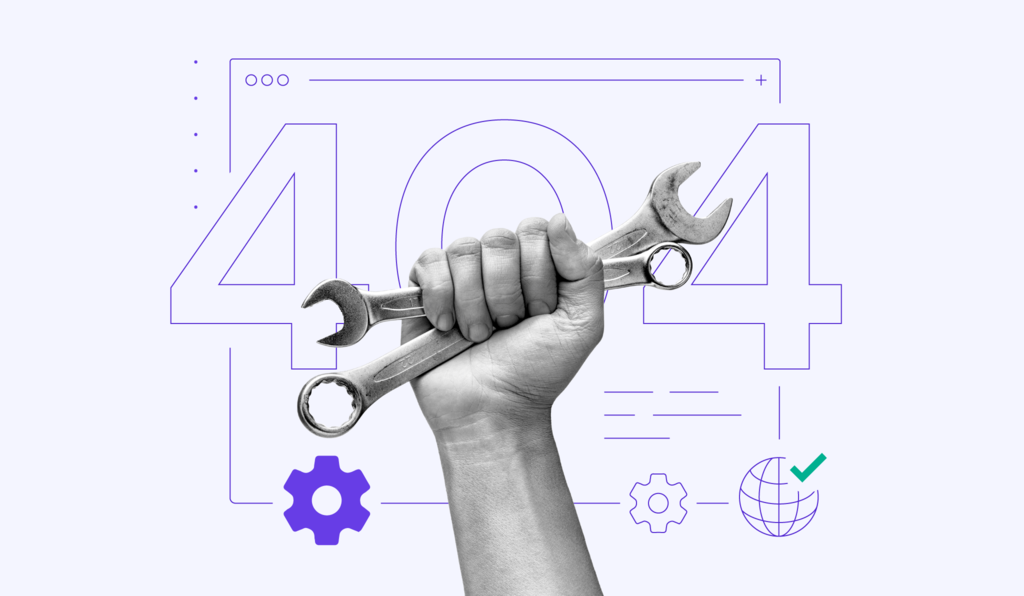A 404 error is frustrating for users and website owners alike. It indicates a missing page, leading to a poor user experience and potential loss of traffic.
Website 404 errors can harm your site’s reputation and SEO rankings. Fixing these errors is crucial for maintaining a smooth user experience and keeping visitors engaged. With the right tools, you can quickly identify and resolve these issues. This blog post will explore various tools to help you fix website 404 errors efficiently.
By using these tools, you can ensure your website remains functional, user-friendly, and optimized for search engines. Let’s dive into the solutions to keep your site error-free and your visitors happy.
Introduction To 404 Errors
404 errors can be frustrating for both website owners and users. They occur when a webpage is not found on the server. Understanding and fixing these errors is crucial for maintaining a positive user experience. Let’s dive into the basics of 404 errors and their impact on your website.
What Is A 404 Error?
A 404 error happens when a server cannot find the requested page. This error message tells users that the page they are trying to access does not exist. Common reasons for 404 errors include deleted pages, broken links, or mistyped URLs.
Impact On User Experience
404 errors can negatively affect user experience. Users may feel frustrated or confused. This can lead to a higher bounce rate, where visitors leave your site quickly. This can hurt your site’s search engine ranking.
It’s important to address 404 errors promptly. Fixing these errors can improve user satisfaction and keep visitors on your site longer.
Common Causes Of 404 Errors
Encountering 404 errors on your website can be frustrating. These errors indicate that a page could not be found. Understanding the common causes can help you fix them efficiently. Let’s delve into some frequent reasons for 404 errors on websites.
Broken Links
Broken links are a major cause of 404 errors. They occur when a link points to a page that no longer exists. This can happen due to typos in the URL. It can also happen if the linked page has been removed. Regularly check and update your links to prevent this issue.
Moved Or Deleted Pages
Another common cause is moved or deleted pages. If you change the URL of a page, any existing links to the old URL will result in a 404 error. The same happens if you delete a page. Use redirects to ensure visitors reach the new location instead of encountering an error.
Identifying 404 Errors
Identifying 404 errors is crucial for maintaining a healthy website. These errors occur when a page is missing or the URL is incorrect. They can negatively impact the user experience and your site’s SEO. Spotting these errors quickly ensures that visitors stay engaged and search engines keep your site in good standing.
Using Google Search Console
Google Search Console is a powerful tool for finding 404 errors. Log into your account and navigate to the “Coverage” section. Here, you will see a list of errors, including 404s. Click on the error details to view the affected URLs. This helps you understand which pages need fixing.
You can also set up email alerts for new errors. This ensures you are always aware of issues as they arise. Regularly monitoring your Google Search Console helps maintain a smooth user experience.
Other Diagnostic Tools
Besides Google Search Console, several other tools help identify 404 errors. Tools like Screaming Frog and Ahrefs offer site audits. These audits highlight broken links and missing pages.
Screaming Frog crawls your website and lists all the errors. It provides a detailed report, making it easier to locate and fix issues. Ahrefs also has a site audit feature. This tool checks for 404 errors and suggests improvements.
Using multiple tools ensures you catch all potential issues. Each tool has unique features that can help maintain your website’s health.

Credit: error404.atomseo.com
Fixing Broken Links
Broken links can frustrate your visitors and harm your SEO. Fixing them is crucial for maintaining a healthy website. Here are some effective methods to fix broken links.
Manual Link Correction
Manual link correction involves checking and fixing each broken link one by one. This method is time-consuming but ensures accuracy.
To fix links manually:
- Access your website’s admin panel.
- Find broken links using the website’s analytics or reports.
- Update each broken link to a valid URL.
- Save changes and test the links to ensure they work.
Manual correction is ideal for small websites. It gives you complete control over each link.
Automated Link Checkers
Automated link checkers can save time, especially for large websites. These tools scan your site and identify broken links quickly.
Popular automated link checkers include:
- Broken Link Checker – A WordPress plugin that scans and reports broken links.
- Google Search Console – Offers a Crawl Errors report to find broken links.
- Screaming Frog SEO Spider – A desktop program that crawls websites to find broken links.
Using these tools, you can fix broken links efficiently.
| Tool | Description | Platform |
|---|---|---|
| Broken Link Checker | Scans and reports broken links. | WordPress |
| Google Search Console | Provides Crawl Errors report. | Web |
| Screaming Frog SEO Spider | Crawls websites for broken links. | Desktop |
Choose the tool that best suits your needs. Automated link checkers streamline the process.
Handling Moved Or Deleted Pages
Handling moved or deleted pages is crucial for website maintenance. Users encountering 404 errors may leave your site. This impacts your site’s SEO and user experience. Fixing these errors keeps visitors engaged and improves search engine rankings.
301 Redirects
Use 301 redirects to handle moved pages. A 301 redirect tells browsers the page has moved permanently. This ensures users and search engines find the new page. Implementing 301 redirects helps maintain your site’s SEO value.
Setting up 301 redirects is simple. Many content management systems (CMS) offer plugins for this. You can also configure it through your server settings. Regularly check for moved pages and update your redirects.
Creating Custom 404 Pages
Custom 404 pages improve user experience. A well-designed 404 page guides users back to your site. Include links to popular pages or a search bar. This helps users find what they need.
Creating a custom 404 page is easy. Most CMS platforms offer templates. You can also design your own. Ensure your 404 page matches your site’s look and feel. This maintains brand consistency and keeps visitors engaged.

Credit: www.v9digital.com
Preventing Future 404 Errors
404 errors can harm user experience and SEO. Preventing these errors is crucial. Regular maintenance and good practices can help.
Regular Website Audits
Perform regular website audits to catch broken links early. Tools like Google Search Console and Screaming Frog can help. These tools scan your site and report 404 errors.
Set a schedule for these audits. Weekly or monthly checks work well for most sites. Consistent audits help maintain your site’s health.
Content Management Best Practices
Good content management practices can prevent 404 errors. Avoid deleting pages without redirects. Use 301 redirects for moved content. This keeps old links working.
Keep a list of your site’s URLs. Update this list with every change. This helps you track and manage content better.
Internal linking is important. Check internal links regularly. Broken internal links lead to 404 errors. Fix these quickly to maintain a smooth user experience.
| Tool | Purpose |
|---|---|
| Google Search Console | Monitor and fix site issues |
| Screaming Frog | Find broken links and errors |
| 301 Redirects | Redirects old URLs to new ones |
Use these tools and practices to keep your site error-free. Regular audits and good content management can prevent 404 errors. This ensures a better experience for your users.
Advanced Tools For Managing 404s
Managing 404 errors on your website is crucial for maintaining a good user experience and search engine ranking. Advanced tools can help you identify and fix these errors efficiently. Let’s explore some of the best tools for managing 404s.
Screaming Frog Seo Spider
Screaming Frog SEO Spider is a powerful tool that crawls your website. It identifies broken links, 404 errors, and other issues. You can easily generate reports to pinpoint exact problem areas. This tool allows you to monitor and resolve 404 errors quickly. It also integrates with Google Analytics to provide comprehensive insights.
Ahrefs Site Audit
Ahrefs Site Audit is another excellent tool for managing 404 errors. It scans your website and highlights any broken links or pages with 404 errors. The tool provides detailed reports, making it easy to identify and fix issues. Ahrefs Site Audit also offers suggestions to improve your site’s overall health. This tool is user-friendly and highly effective.
Monitoring And Reporting
Monitoring your website’s health is crucial. One major issue is 404 errors. These errors can harm user experience and SEO. Effective tools help monitor and report these errors. This ensures you can fix them quickly. Let’s dive into key aspects of monitoring and reporting 404 errors.
Setting Up Alerts
Setting up alerts is essential. Alerts notify you instantly about 404 errors. You can use tools like Google Search Console. It sends notifications when it detects issues. Here are steps to set up alerts:
- Sign in to Google Search Console.
- Navigate to the “Settings” section.
- Select “Email notifications.”
- Enable “404 error alerts.”
This setup ensures you get timely updates. You can address issues as soon as they arise. Other tools like Ahrefs and Screaming Frog also offer alert features. Choose a tool that fits your needs.
Generating Reports
Generating reports helps you track the frequency of 404 errors. Reports provide insights into recurring issues. Use these insights to fix underlying problems. Here’s how to generate reports:
- Google Analytics: Use the “Behavior” section to find 404 errors.
- Ahrefs: Go to the “Site Audit” section for detailed reports.
- SEMrush: Use the “Site Audit” tool for comprehensive error reports.
These reports highlight the most affected pages. Fixing these pages improves user experience. Regularly review reports to keep your site error-free.

Credit: www.hostinger.com
Frequently Asked Questions
What Causes 404 Errors On A Website?
404 errors occur when a webpage can’t be found. This usually happens due to broken links, deleted pages, or incorrect URLs.
How Do 404 Errors Impact Seo?
404 errors can harm SEO by creating a poor user experience. Search engines may lower your site’s ranking due to frequent 404 errors.
What Are Some Tools To Fix 404 Errors?
Tools like Google Search Console, Screaming Frog, and Ahrefs can help identify and fix 404 errors effectively.
Can 404 Errors Be Redirected?
Yes, 404 errors can be redirected using 301 redirects. This helps retain the SEO value and improves user experience.
Conclusion
Fixing 404 errors is crucial for user experience and SEO. Use tools to identify and correct these issues. Regularly monitor your website for broken links. This helps maintain a smooth user journey. Keep your site updated and error-free. Happy visitors mean better engagement.
Better engagement boosts your search rankings. Don’t let 404 errors frustrate your users. Take action today and keep your website healthy.